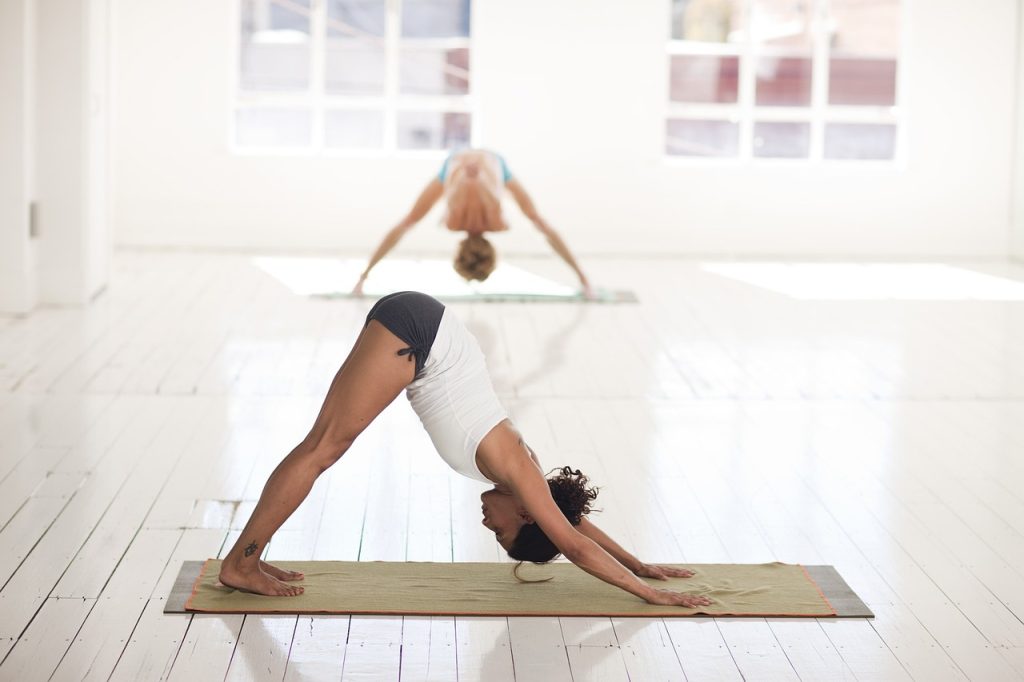Yoga, an ancient practice combining physical postures, breath control, and meditation, offers many benefits for both the body and mind. Among its many advantages, yoga is particularly effective in improving flexibility and promoting relaxation. Incorporating a few simple yoga poses into your daily routine can significantly impact your overall well-being. In this article, we’ll explore three easy-to-follow yoga poses that can help enhance flexibility while inducing a sense of calm and relaxation.
-
Downward Facing Dog (Adho Mukha Svanasana):
Downward Facing Dog is a foundational yoga pose that stretches and lengthens multiple muscle groups, making it an excellent choice for improving flexibility. This pose primarily targets the hamstrings, calves, shoulders, and spine. It also helps to open up the chest and release tension in the back.
How to Perform:
- Begin on your hands and knees, aligning your wrists under your shoulders and knees under your hips.
- Tuck your toes under and lift your hips toward the ceiling, creating an inverted V-shape with your body.
- Press your hands firmly into the mat and engage your core muscles.
- Keep your heels slightly lifted and your knees slightly bent if needed to maintain a straight spine.
- Breathe deeply and hold the pose for 3-5 breaths before releasing.
-
Triangle Pose (Trikonasana):
Triangle Pose is known for its ability to stretch and strengthen the legs, while also providing a gentle twist that aids in spinal flexibility. This pose engages the hamstrings, hips, and side body muscles, promoting improved flexibility and alignment.
How to Perform:
Stand with your feet about 3-4 feet apart, with one foot pointing forward and the other foot turned out at a 90-degree angle.
Extend your arms out to the sides at shoulder height.
- Hinge at your hip to reach your front arm down toward your front foot, while keeping your spine straight.
- Once you can’t reach any further, place your hand on your shin, ankle, or the floor, and extend your other arm toward the ceiling.
- Gaze upward and hold the pose for 3-5 breaths before switching sides.
-
Child’s Pose (Balasana):
Child’s Pose is a restful and gentle pose that promotes relaxation and flexibility in the spine, hips, and thighs. It’s an ideal posture to practice in between more active poses or as a way to wind down at the end of your yoga session.
How to Perform:
- Begin on your hands and knees in a tabletop position.
- Sit back onto your heels, keeping your big toes touching and knees spread apart.
- Exhale and lower your torso between your thighs, resting your forehead on the mat.
- Extend your arms forward or alongside your body, palms facing up.
- Breathe deeply and hold the pose for several breaths, focusing on releasing tension and relaxing.
Incorporating these three simple yoga poses into your routine can gradually lead to improved flexibility and a greater sense of relaxation. Remember that yoga is a practice, and progress takes time. Be patient with yourself and listen to your body’s limits. If you’re new to yoga or have any existing medical conditions, it’s a good idea to consult with a healthcare professional before starting a new exercise routine.
As you engage in these poses, prioritize your breath, and maintain a sense of mindfulness. The combination of physical movement and focused breathing can amplify the relaxation benefits of these poses. Over time, with consistent practice, you’ll likely notice increased flexibility, reduced tension, and a greater overall sense of well-being – all of which are the true gifts of a dedicated yoga practice.
Let us know if you have ever tried any of these yoga poses in the comments below!


